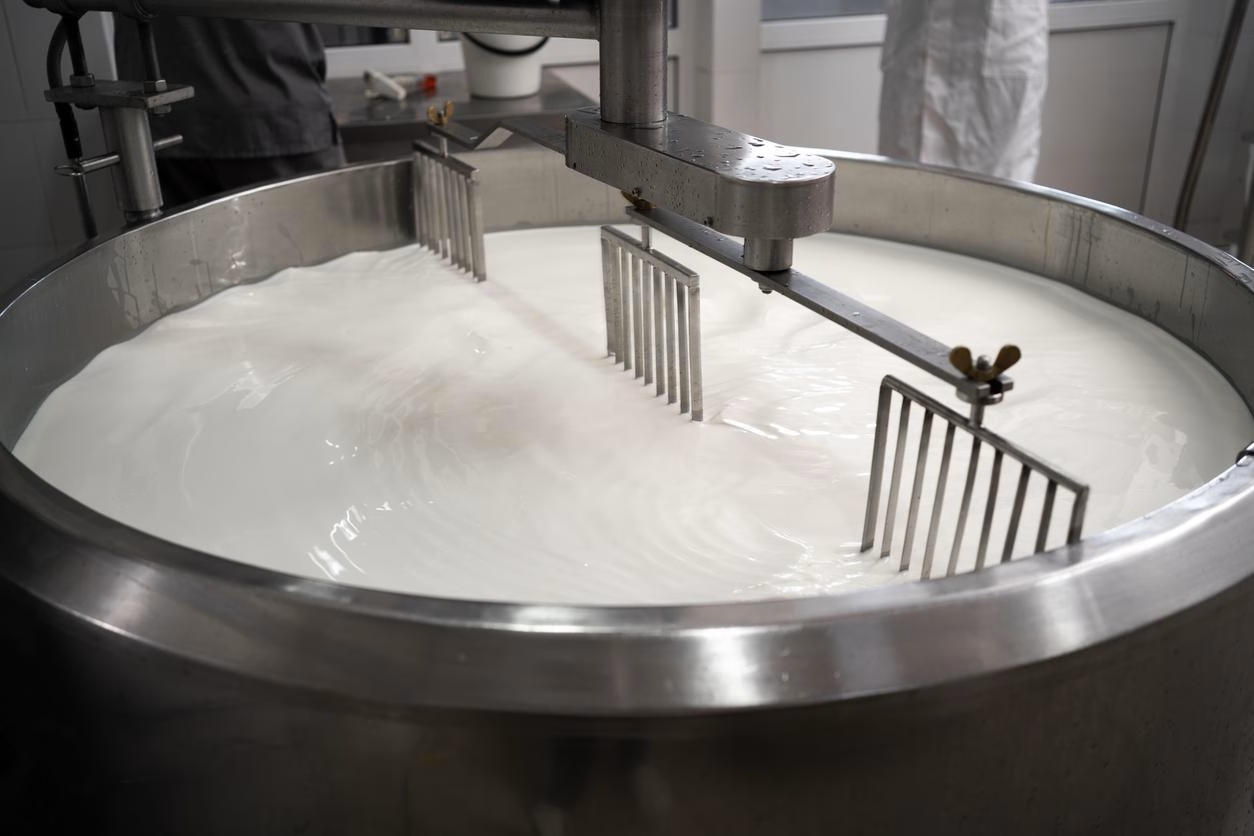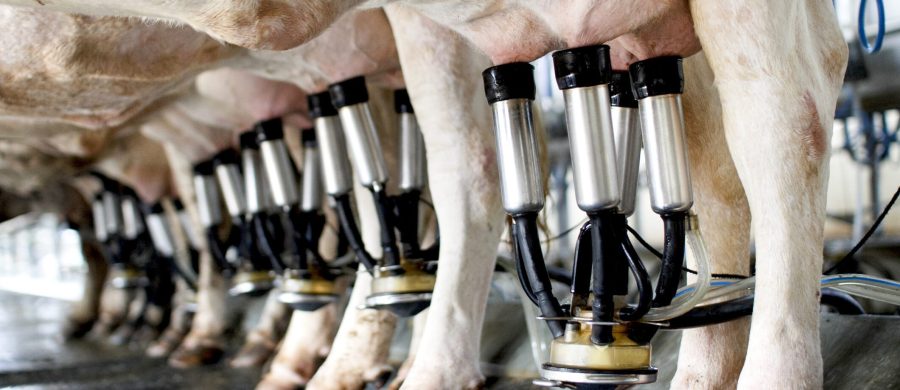Can U.S. dairy farmers thrive despite growth challenges and high costs? Discover their strategies and the role of export markets in our latest article.
Summary: Have you ever wondered what the future holds for the U.S.? While many dairy farmers are turning profits, high costs and short supplies of heifer replacements could pose roadblocks. As the demand for milk in the U.S. grows, it becomes increasingly vital. The central is buzzing with opportunities, thanks to projects like the Lupino factory in Lubbock, Texas, and the Hilmar facility in Dodge City, Kansas. One potential solution is using breeding technology to increase heifer calves, though the costs and development time remain concerns.
- Most dairy farmers turned profits over the past 5 years, and many plan to expand operations within the next five years.
- Heifer replacements are in short supply, posing challenges to increased milk production.
- Export markets have become critical due to the anticipated surge in milk processing capabilities.
- Dairy farmers are optimistic and adaptable, willing to meet the market demands head-on.
- Increased competition from the European Union and New Zealand globally.

Did you know that, despite the volatility, many dairy producers in the United States have generated a profit in the last five years? This resiliency demonstrates the industry’s strength and reassures us about its future. But what comes next for the U.S. dairy industry? Many dairy producers plan to expand in the following years, using billions of dollars set aside for development. However, the route has hurdles. The high cost and scarcity of heifer replacements threaten to impede this promising trend.
Furthermore, rising production capacity highlights the dairy industry’s potential for significant expansion in the United States. This optimism is bolstered by the significance of expanding beyond home boundaries and entering foreign markets. The southern area, in particular, will experience a shortfall. Millions of pounds of milk must be produced every day to serve new facilities opening in that area. Are you prepared to negotiate future growth, impending hurdles, and the importance of export markets? The future of U.S. dairy is packed with opportunities, but it also presents challenges that need strategic preparation and resilience.
U.S. Dairy’s Golden Era: Growth, Challenges, and Global Opportunities
The dairy business in the United States is undergoing rapid development and expansion. In recent years, profitability has been a notable trend among dairy producers, with over 70% reporting profits in the last five years. This favorable economic climate is paving the way for big growth ambitions. Over half of the dairy farmers polled want to expand their operations during the next five years, citing the industry’s strong market demand and bright future.
Substantial financial investments support the commitment to growth. Billions of dollars are invested in the business and allocated for future development projects and advancements. These investments are projected to boost production capacities, increase efficiency, and help create new processing units. Significant increases are on the horizon in crucial places such as Texas and Kansas, where large-scale industries use millions of pounds of milk every day. This implies a planned effort to expand operations and fulfill market needs, which might improve the overall competitiveness of the U.S. dairy business on both local and international levels.
The central United States is bustling with possibilities, thanks to huge developments such as the Lupino factory in Lubbock, Texas, and the Hilmar facility in Dodge City, Kansas. These initiatives are more than expansions; they reflect a daily demand for millions of pounds of milk. Consider the logistical challenges, the quantity of cows required, and the revolutionary effect this may have on local economies. For dairy producers, this means opportunity. Can you imagine the size of operations necessary to provide an extra 8 million pounds of milk every day? These places have a strong feeling of momentum, ready to reshape the dairy landscape.
Facing the Heifer Hurdle: The Challenge of Expanding U.S. Dairy Herds
One of the most critical issues confronting the U.S. dairy business is the high cost and scarcity of heifer replacements. These young female cows, known as heifers, are vital to sustaining and increasing herds. However, their supply is now restricted, posing a barrier to increasing milk output.
Imagine planning a significant expansion only to discover that the crucial components—heifers—are rare and costly. This puts an extra financial burden on farmers and hinders the expansion process. Even the best-equipped farms cannot scale up productivity as intended unless they get a consistent supply of heifers.
One possible answer to the heifer replacement challenge is modern breeding technology, such as sexed semen. This technology allows for the selection of the sex of the calf, increasing the likelihood of heifer calves being born. While this may alleviate the problem somewhat, there are more effective remedies. Given the investment in such technology and the time it takes for heifers to develop, this dilemma will likely remain a significant worry in the immediate future.
Unyielding Optimism: How U.S. Dairy Farmers Rise to Market Demands
Michael Dykes, President and CEO of the International Dairy Foods Association (IDFA), is optimistic about dairy farmers’ adaptation and resilience in the face of market pressures. “I know dairy farmers; if the market is there, they will grow,” he firmly claims, emphasizing the industry’s proactive approach. Large dairy producers, mainly, are keen to grow as demand rises.
Dykes discusses numerous options that farmers might use to fulfill this expanding need. “If there’s a market demand for the milk, they’ll find a way to start producing more heifers with sexed semen,” he suggests. This new reproductive technique enables more female calves, critical for improving milk production. Furthermore, farmers will change their feeding procedures to optimize diets and increase cow milk production.
The combination of these tactics exemplifies the inventive spirit of American dairy producers. “They’ll find a way to make the terms they will work with rations; they’ll increase the milk production per cow,” Dykes elaborates. His steadfast faith in the dairy industry’s inventiveness shines through: “I’m a firm believer that dairy farmers respond to market signals, and I believe the milk will be there.”
Export Markets: The Lifeline for U.S. Dairy’s Future Growth
The significance of export markets cannot be emphasized, particularly given the expected rise in milk output. Stephen Cain, Senior Director of Economic Research and Analysis at the National Milk Producers Federation (NMPF), echoes this opinion, stating that the growing ability to process milk locally may soon outpace local demand. Therefore, The industry needs to look towards the export market to move some of this additional capacity.
Finding new overseas markets is not simply a strategy for dairy producers in the United States; it is a need. Cain underlines that in the absence of these markets, domestic processing facilities may need to improve operational efficiency. Plants may be required to shorten runtimes or even close if they cannot perform properly. This is especially problematic considering the quantity of additional processing capabilities predicted to become available shortly.
Furthermore, Cain cautions that failure to establish a significant presence in the global market may result in prematurely closing less efficient operations. He clarifies: “The export market will be key for moving some of this product overseas.” The dairy sector in the United States may maintain its expansion while mitigating overproduction concerns by expanding into overseas markets. This strategy shift will be critical as America confronts stiffer competition from dairy farmers in the European Union and New Zealand.
Turning the Tide: How U.S. Dairy Can Win on the Global Stage
The worldwide stage is unquestionably competitive, with the European Union and New Zealand dominating the dairy business. Both locations have long-established marketplaces and are recognized for their efficient manufacturing processes. This creates a double challenge for U.S. dairy: not only must they achieve rigorous international standards, but they must also outperform well-established rivals.
However, this competition is not impossible. The U.S. dairy business has distinct advantages that may be used to carve out and grow market share abroad. For example, technology developments and production process innovations give dairy farmers in the United States a considerable advantage in terms of efficiency and productivity. Integrated supply chains, aided by cutting-edge agricultural technology, simplify operations, save prices, and improve quality control.
To summarize, although competition from the E.U. and New Zealand is fierce, the U.S. dairy business has plenty of opportunities to overcome these obstacles. Embracing innovation, pushing for favorable regulations, and emphasizing their dedication to quality and sustainability will help U.S. dairy farmers compete and grow worldwide.
Consumer Trends: How Dairy Farmers Are Adapting to the Rise of Plant-Based and Organic Products
Consumer patterns rapidly change, and the U.S. dairy business feels the effects. Have you seen the increasing availability of plant-based milk substitutes and organic dairy products? This isn’t a passing trend. According to a Plant-Based Foods Association estimate, the plant-based milk industry increased by 6% in 2020, reaching a remarkable $2.5 billion in sales [PBFA Report]. Furthermore, the organic dairy business is developing significantly, with sales expected to increase by 5.5% in 2020 to $6.8 billion[OTA Report].
So, how does this affect conventional dairy farmers? So, adaptability is the name of the game. Assume you’ve been a dairy farmer for decades and must broaden your offerings. The good news is that many farmers are rising to the occasion. To meet increasing customer demand, several businesses are transitioning to organic systems. Others are even turning to plant-based alternatives, such as oat or almond milk, to remain competitive in this changing market.
But it’s more than simply diversifying offerings; it’s also about recognizing customer preferences. Consumers nowadays are increasingly aware of environmental issues and animal welfare. According to a Nielsen poll, 73% of worldwide consumers would definitely or probably modify their purchase patterns to decrease their ecological effects [Nielsen Survey]. This change encourages dairy producers to use more sustainable techniques and technologies to increase efficiency and reduce carbon emissions.
The Human Factor: Why Workforce Development is Crucial for the Dairy Industry
One of the most significant concerns facing the dairy sector in the United States as it prepares to expand is a workforce shortage. Have you ever wondered who would manage the growing herd of cows or run the sophisticated gear on these expanding farms? According to recent research, more than 60% of dairy farms have a significant scarcity of experienced staff. This scarcity is more than a minor glitch; it may drastically delay development and reduce productivity.
So, what is being done to remedy this? Various efforts are targeted at training and keeping talented workers. The Dairy Workforce Training Initiative, a University of Wisconsin-Madison initiative, is making waves. “Our goal is to equip future dairy workers with the skills needed to excel in a modern dairy farm setting,” says Dr. Emily Walker, program coordinator [UW Madison].
Furthermore, teamwork is necessary. Industry leaders collaborate with educational institutions to provide hands-on training modules that include old methodologies, modern technology, and sustainable practices. Jim Collins, CEO of Collins Dairy Farms, highlights the importance of technology in maintaining competitiveness. According to Collins Dairy, technology is only as effective as its operators. Programs like this are helpful now and are laying a solid basis for the future of U.S. dairy by investing in human capital and assuring long-term success.
The Bottom Line
The U.S. dairy sector is poised for significant development, propelled by new investments and the building of large-scale processing units. However, this hopeful future is challenging. Dairy producers face considerable hurdles due to the high cost of heifer replacements and the need to boost milk output. However, the tenacity and flexibility of U.S. dairy farmers come through since they are recognized for efficiently responding to market needs. Furthermore, as local production capacity increases, finding overseas markets for excess milk and dairy products becomes critical. To compete with global players such as the European Union and New Zealand, dairy producers in the United States must be strategic, inventive, and collaborative. Are you prepared to grab these possibilities while navigating the challenges? The future of dairy is in your hands.














